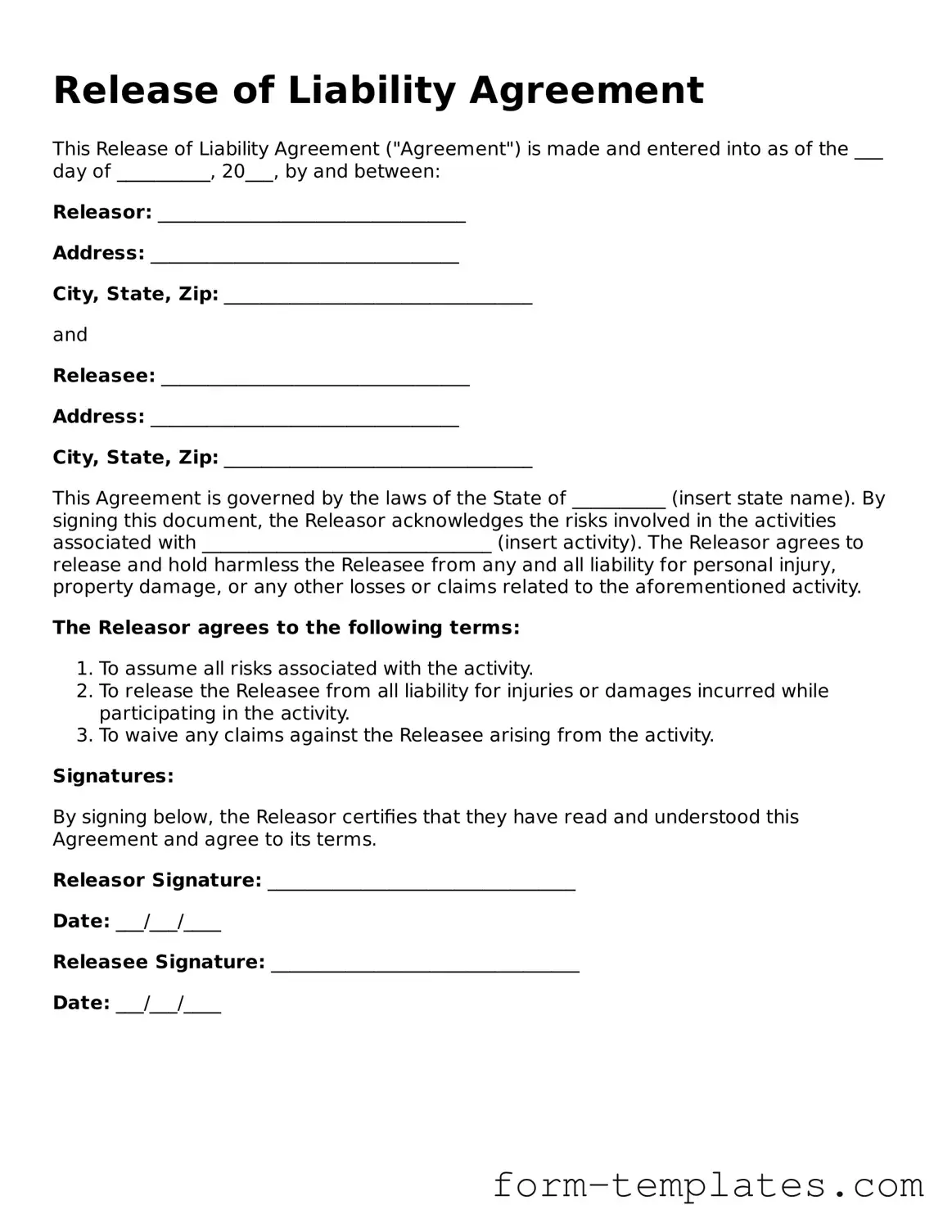Release of Liability Agreement
This Release of Liability Agreement ("Agreement") is made and entered into as of the ___ day of __________, 20___, by and between:
Releasor: _________________________________
Address: _________________________________
City, State, Zip: _________________________________
and
Releasee: _________________________________
Address: _________________________________
City, State, Zip: _________________________________
This Agreement is governed by the laws of the State of __________ (insert state name). By signing this document, the Releasor acknowledges the risks involved in the activities associated with _______________________________ (insert activity). The Releasor agrees to release and hold harmless the Releasee from any and all liability for personal injury, property damage, or any other losses or claims related to the aforementioned activity.
The Releasor agrees to the following terms:
- To assume all risks associated with the activity.
- To release the Releasee from all liability for injuries or damages incurred while participating in the activity.
- To waive any claims against the Releasee arising from the activity.
Signatures:
By signing below, the Releasor certifies that they have read and understood this Agreement and agree to its terms.
Releasor Signature: _________________________________
Date: ___/___/____
Releasee Signature: _________________________________
Date: ___/___/____
